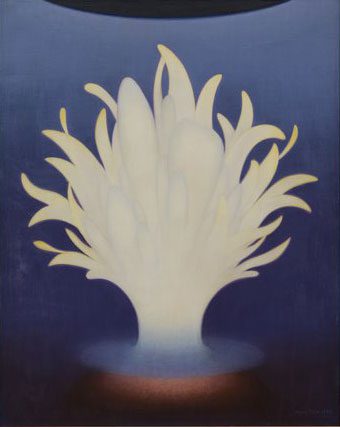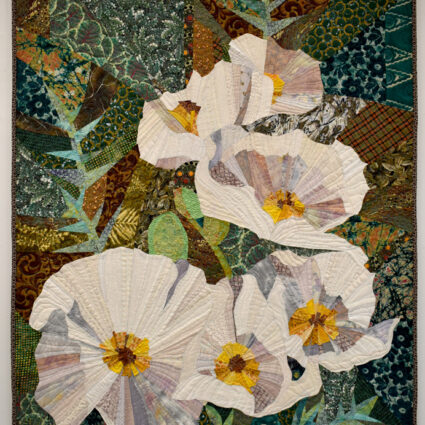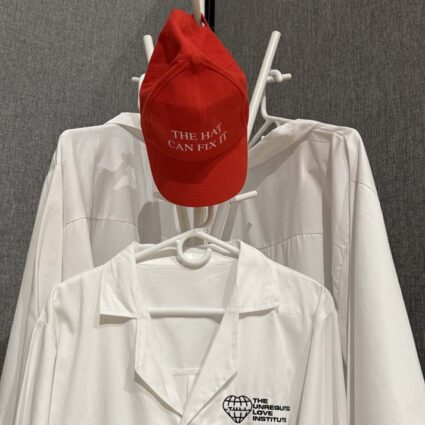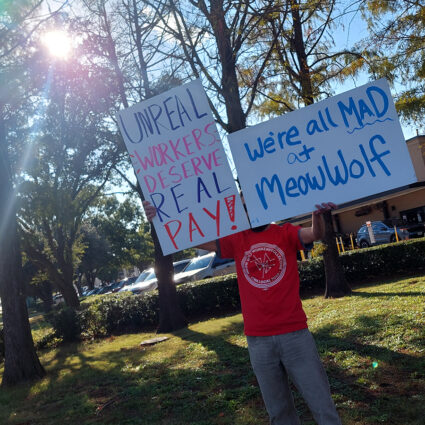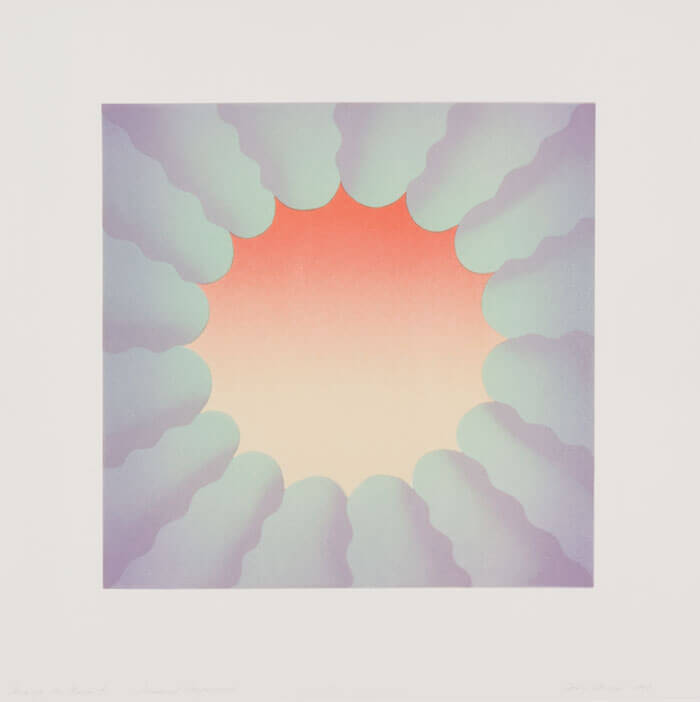
University of New Mexico Art Museum, Albuquerque
August 24, 2018-Ongoing
After an afternoon insisting that I was impatient, though my date didn’t believe it was true, it was significant to walk into the UNM Museum of Art together. Galleries, of course, with their windowless, static light and the contemplation they nurture, speed up or slow down time.
Hindsight/Insight presents works from 1962 to the present, arranged by style, enunciating the relationships between works from their collections and borrowed pieces created by artists who have been affiliated with the university. The show’s eclectic array of work in various media bleeds outward into two simultaneous exhibitions of related work, The Expanded Photograph, and Please Enjoy and Return: Bruce Conner Films from the Sixties.
Moving between the disparate pieces in Hindsight/Insight felt incoherent, but to look for cohesion in material, design, or theme is to perhaps miss the point. The manic work of Roy De Forest is within glancing distance of Judy Chicago’s minimalist Through the Flower 4. The exhibition doesn’t try to manufacture relationships between them through form, content, or intent. Instead, they are presented with the purpose of asking: Why are they here? A question which led me to turn inward, too. How did I end up here? What possible conclusions could be drawn from this interaction? From that series of photos so arranged?
A few steps upward into the adjacent gallery of The Expanded Photograph, the work is unified by medium but, as suggested, is wide-reaching in its experimental take on process. The textural bichromate prints of Betty Hahn look to the opposite wall and Robert Cumming’s black-and-white Fast and Slow Rain, where the rainfall is imposed on the scene as surface scratches. What was the weather even like that afternoon? I don’t know; I was in the museum on a date.
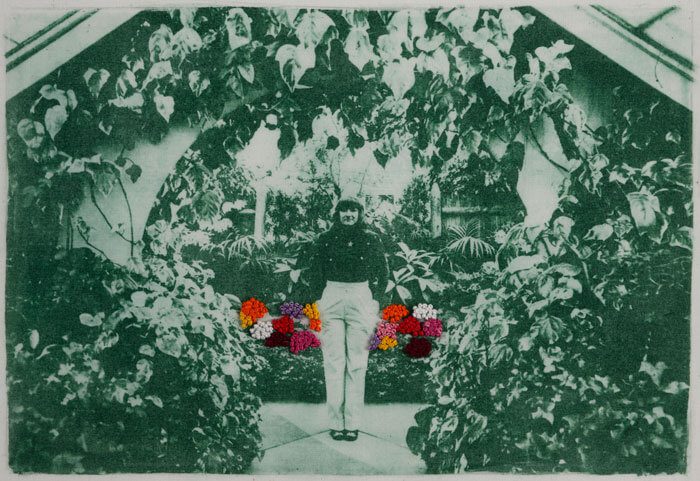
I moved through the superimposed timelines of the shows, speeding up and slowing again, lingering in the ’70s in front of a large charcoal drawing by Richard Serra. You orbit the people you visit museums with just as much as you track the static work on the walls. Because it was a third date and I had a very big crush, the experience was also a flirtation, which to me means asking more questions: what do you like? What do you not like? Staying in step or falling behind, I considered what seems unfashionable amidst 2019’s de-cluttering hype: what can we learn from all that we’ve accumulated?
The interpretative material the museum has provided is self-aware enough to point to the obvious: there are too few women artists and artists of color here. And they offer the analogous questions a viewer might have: why were these pieces in particular collected? How did they earn their place in this university’s canon? As a teaching collection, what did the collectors hope to show us? The answers, left unsaid, reveal themselves in the many things gradually amassed, acquired apace with evolving styles and technologies, across decades.
In the lower gallery, two films (Looking for Mushrooms and Breakaway) by avant-garde structural provocateur Bruce Conner played on a loop. The spliced footage collected in Mexico and San Francisco of Looking for Mushrooms works as a visual mantra set to the transfixing music of Terry Riley. Breakaway, on the other hand, is a frenetic dance by choreographer and singer Toni Basil, the frames quick-cut together to convulsive effect. Both were mesmerizing. Finally, time felt truly banished from the gallery.
My date mentioned how tedious it must have been to edit these together, cutting the frames by hand. How even digitally it would be exhausting. “I think it would be somehow more bearable if the work was physical, even if it is more time- consuming,” I said, realizing that I might not actually be all that impatient.
Maybe the waiting and the work are the good parts. The getting-to-know-you is the good part—and so is the endeavor of trying to understand—just as good as finally arriving at an answer. Constructing meaning from where we’ve been and what we’ve managed to take with us is perhaps how we fathom what’s valuable. There’s a fine line between impatience, momentum, and inertia. This exhibition offers a revelatory pause. Everything that is presented in Hindsight/Insight asks questions without offering up the answers. Here we are let in on the work of discovery, and that exercise, to the point, teaches us quite a lot.
